Mike and Sandy have visited Philadelphia, Williamsburg, Washington DC, etc. before, but it's been many years, so off they go again, this time on a Tauck coach tour. The trip began in Philadelphia, which at least where we were, is much nicer than the news media stories would portray (certainly nicer than San Francisco). It is, compared to most places in California, an OLD city, but reasonably well kept up.
The Museum of the American Revolution is quite nicely done, and traces all the events leading up to the Declaration of Independence.
Then in Independence Hall, you see the rooms where the Declaration and Constitution were written (and hear about all the compromises made in them). The nearby Liberty Bell is interesting, and had throngs of tourists waiting to see it.
(Enlarge any picture in a new window by clicking on it -- click "back," or close the new window, to return to this page.)
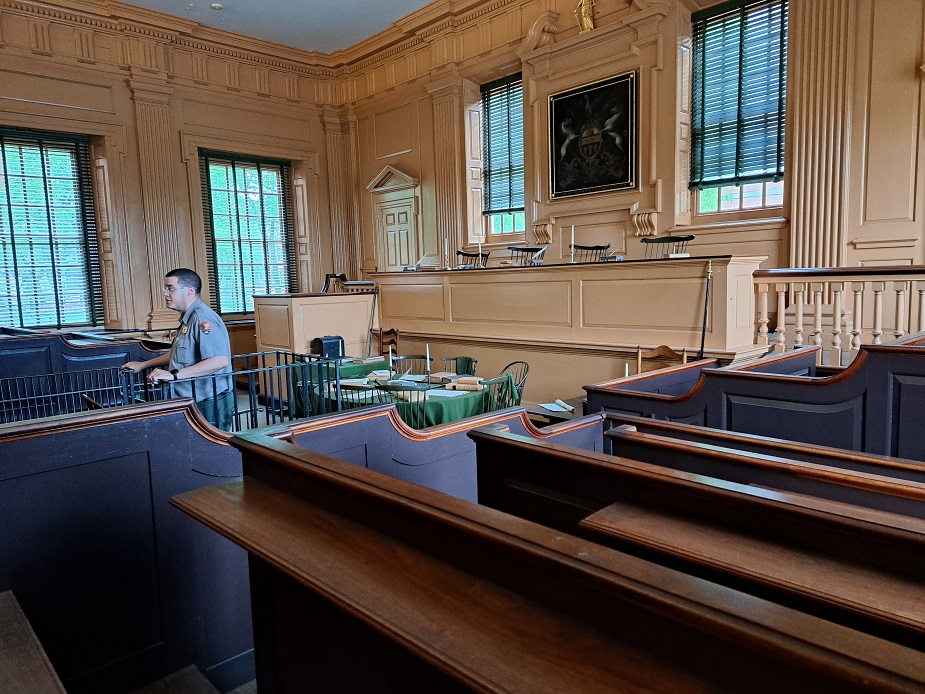
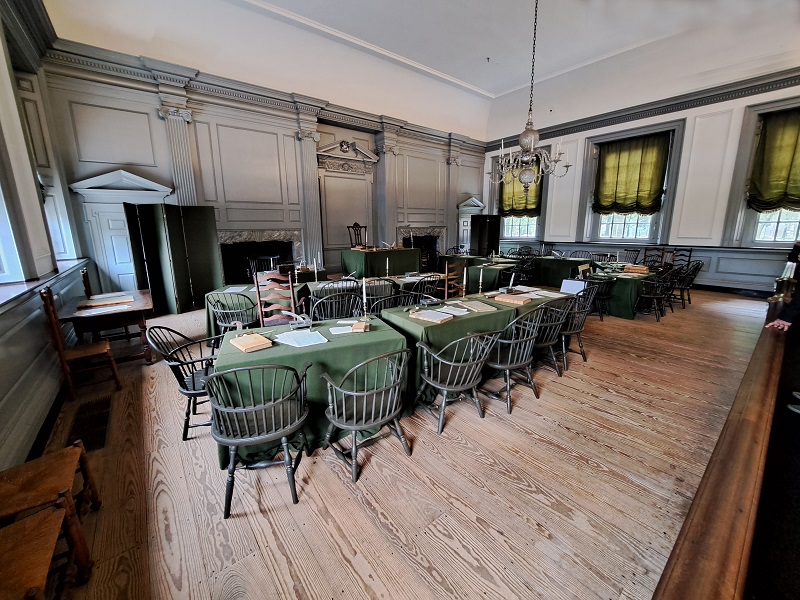
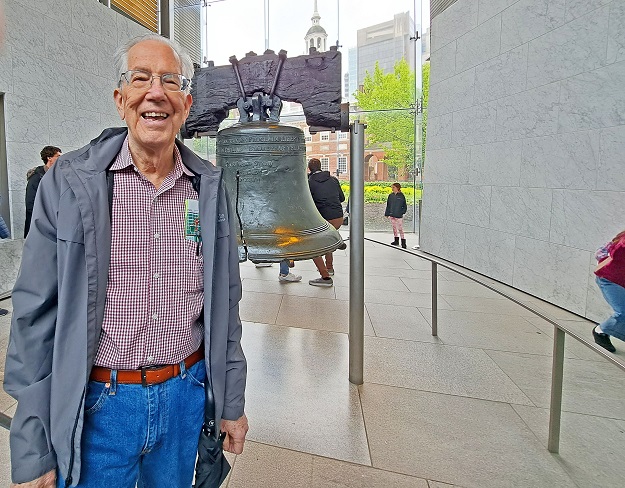
Next day, we were "on the bus" (not under it!) and driving through Lancaster County, Pennsylvania, enroute to Gettysburg. We had a local guide who told us all about the Amish and the ordinary town folks, and we visited an Amish house and over-ate on Amish food. Did you know ALL Amish weddings are held in the month of November? In an area like this, in November there are multiple weddings every day each year during that month.
In the afternoon, we drove on to Gettysburg, and spent considerable time in the Visitor's Center -- very impressive displays and exhibits -- sobering, to say the least. Picking up a local guide, our bus then drove us all around the different battlefield areas.
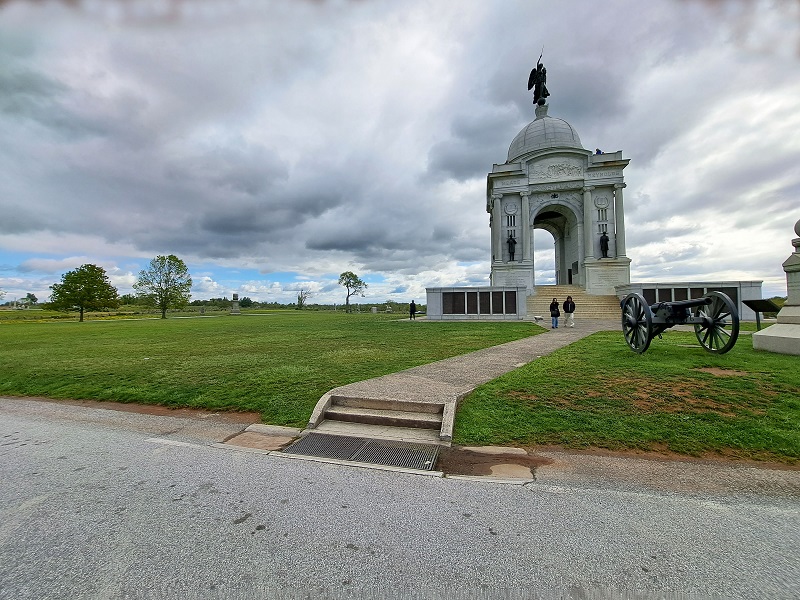
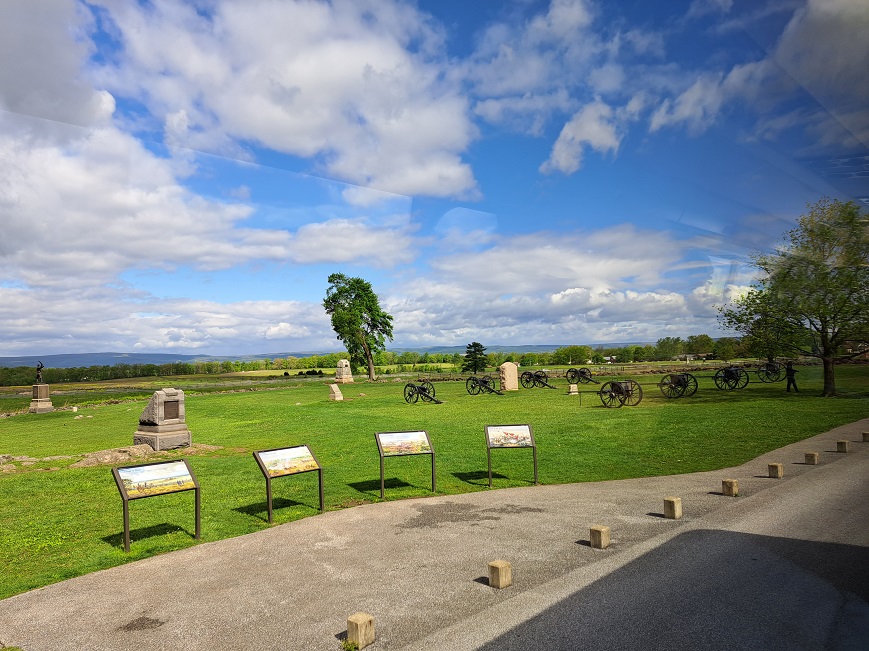

We left Gettysburg, and drove by Harper's Ferry, the site of a mini-rebellion in 1859 that was a factor leading up to the Civil War. Later, we drove through Shenandoah National Park, where its Skyline Drive runs along a ridge of the Applachian Mountains, with spectacular views on both sides. Later, we reached Charlottesville, Virginia, where we would visit Monticello, home of Thomas Jefferson, principal author of the Declaration of Independence. C'Ville, as the locals call it, is also the home of the University of Virginia, and was part of our tour as this University was founded by Thomas Jefferson, and many of its buildings were personnally designed by him.
The mansion at Monticello is quite impressive. It was designed by Jefferson, a self-taught architect among many other talents, and its construction personally supervised by him. It incorporates a number of his inventions, including wine-bottle size dumb waiters built into the sides of the dining room fireplace, and a clever closing mechanism on the various french doors. He lived quite well for the times (although he died in debt while retired there at Monticello). The grounds include an Oak tree twice as old as our 'Heritge Oaks' in California.
Sandy and Mike had the opportunity to meet Mr. Jefferson himself on the lawn in front of his mansion.
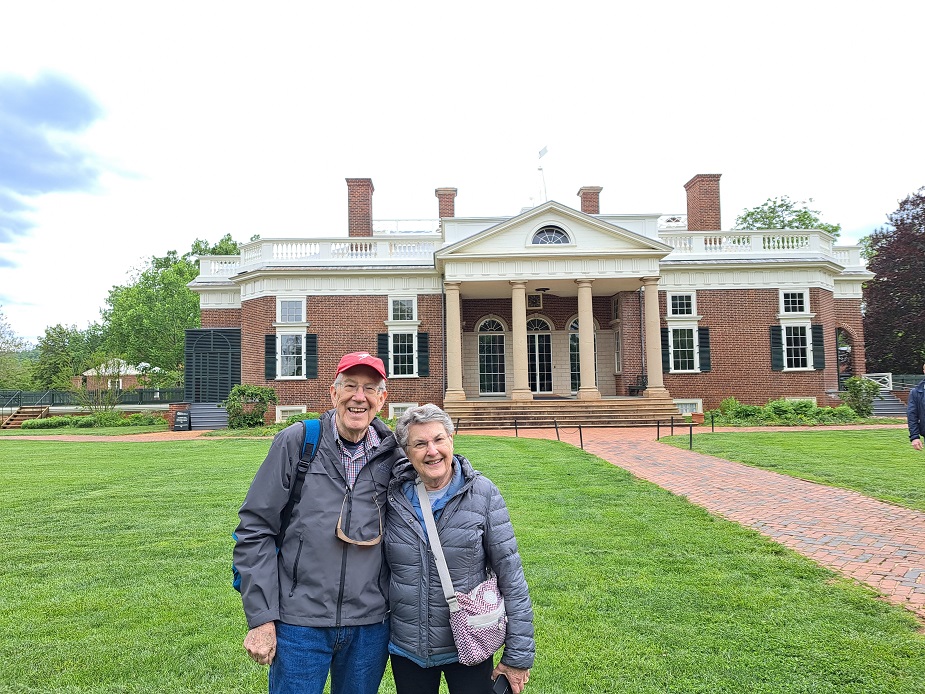
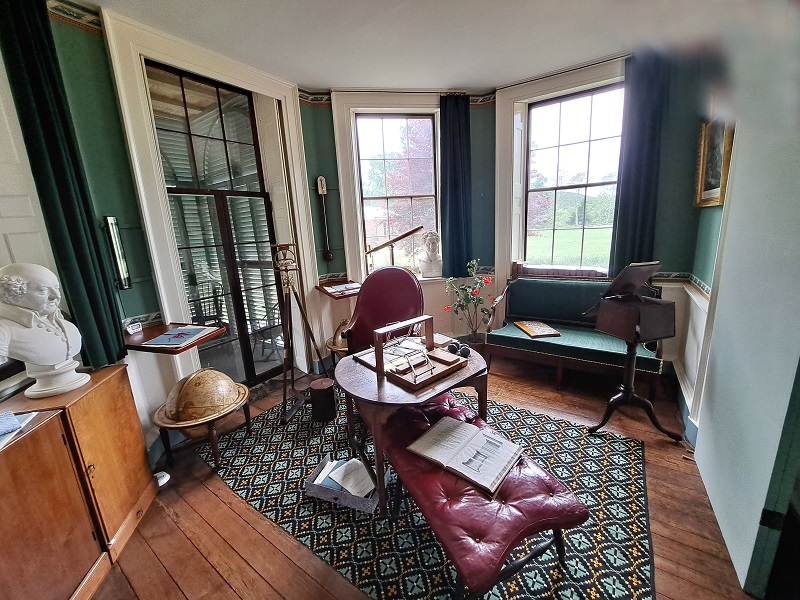
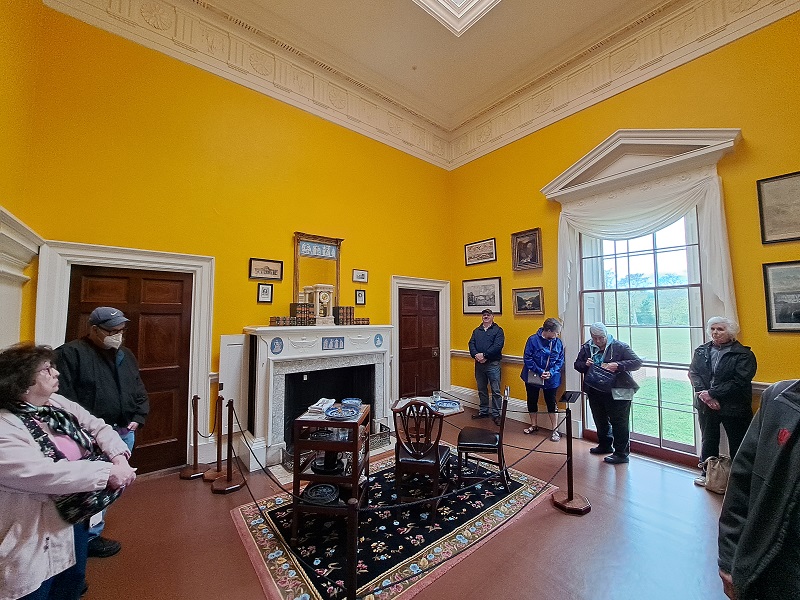
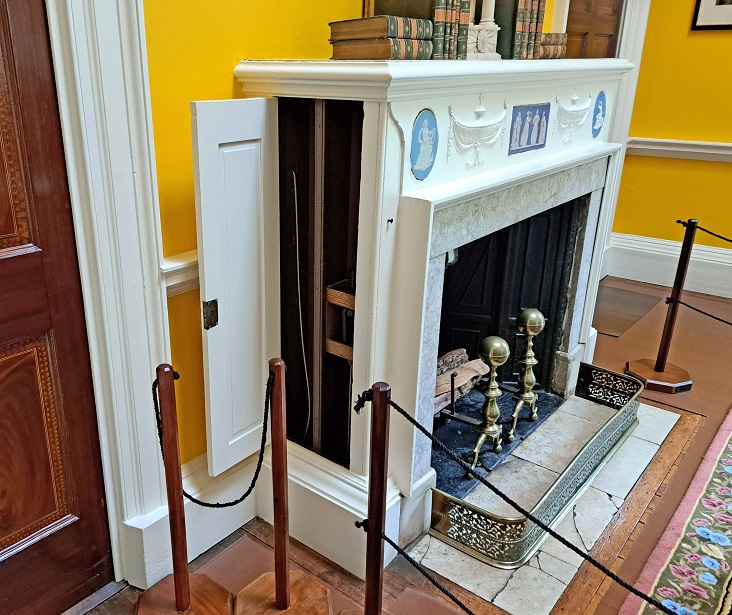
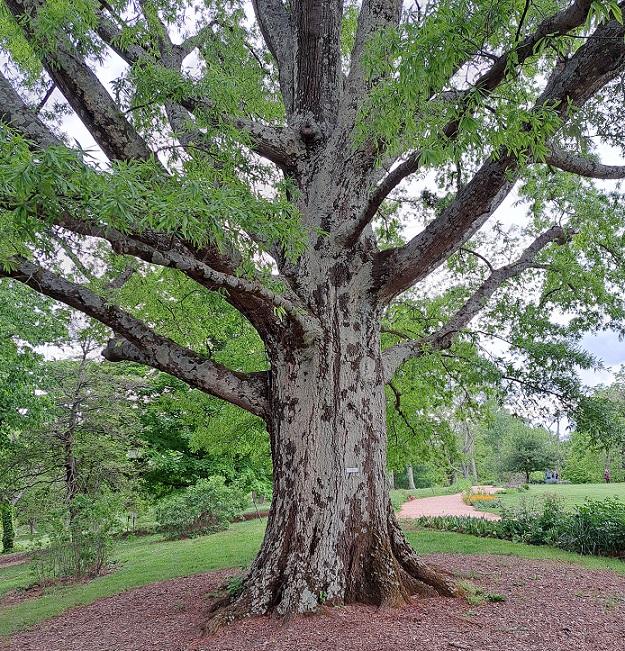
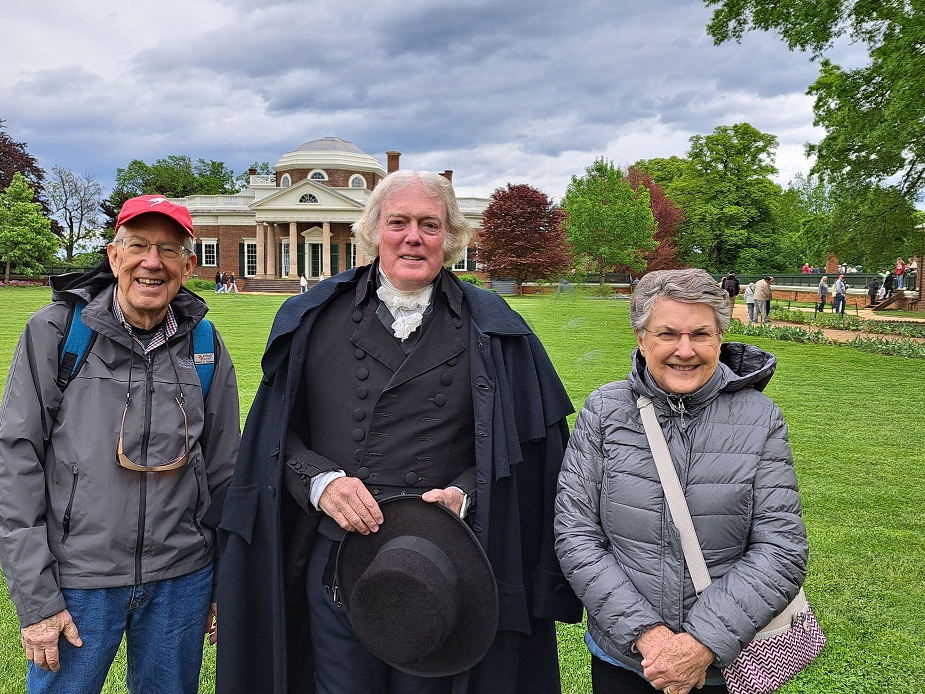
Virginia of course was one of the 13 original colonies, but at our tour of the Virginia State Capitol building in Richmond, we learned Virginia had a much bigger role in the American Revolution than many of the other colonies. Of course Washington and Jefferson were both from Virginia (as was Madison), but we also learned the Virginia Statute for Religious Freedom (passed in 1786) was the model for much of our Bill of Rights (our first 10 amendments).
Richmond was the capitol of the Confederacy, and they took over this small building as their "White House." Also, Robert E. Lee's surrender at Appomattox Courthouse was not far away from Richmond.

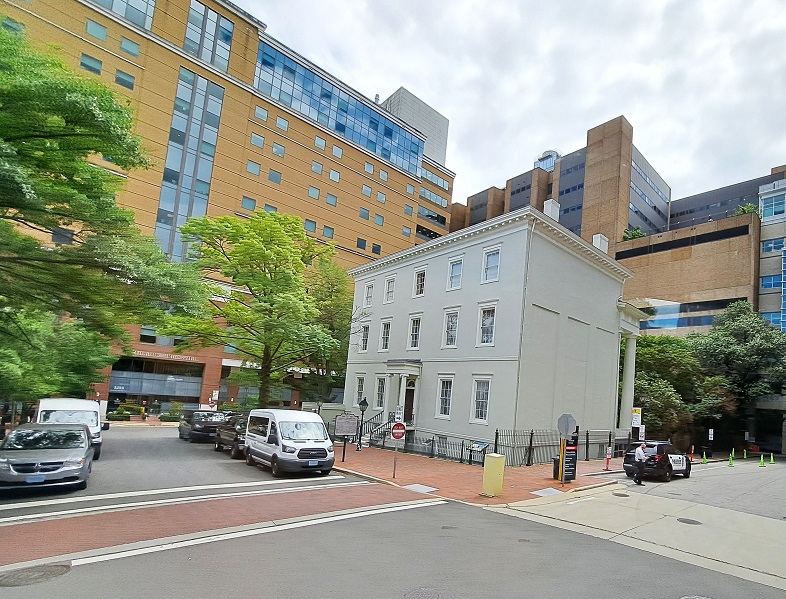
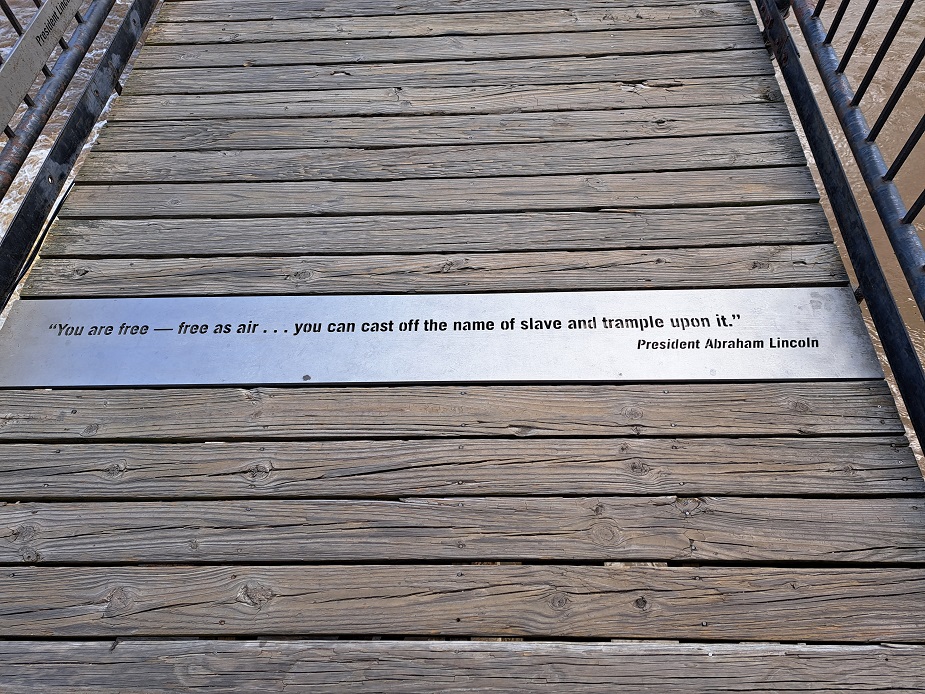
We moved on to Williamsburg, near several of the earliest English settlements, and a colonial capitol for Virginia. It's one of the places where the Continental Congress, which developed the Declaration of Independence, was organized.
"Colonial Williamsburg" is a 300 acre site of hundreds of restored and period buildings, with presentations, demonstrations, etc. of colonial life. (It bills itself as the world's largest outdoor museum.) Most of the staff wear period costumes, and try to make guests feel they are going back in time. Some of the original buildings include the English Governor's Mansion, the Virginia legislature building, the home of Peyton Randolph (a very well-to-do gentleman who was the President of the Continental Congress), and the home of George Wythe, Thomas Jefferson's law professor at the College of William and Mary (and another signer of the Declaration of Independence).
Part of their program involves professional actors who are made up, dressed, and trained to appear exactly like a famous person. They not only give a talk, but can convincingly answer questions, etc. just like their character would. While we were there, both Thomas Jefferson and James Madison look-alikes were on stage at different times. (We weren't as familiar with James Madison, who was our 4th President, and was a major writer of the Constitution, just like Jefferson was the lead author of much of the Declaration of Independence. Both of them, as one might guess, are from Virginia.)
Before Virginia enacted its religious freedom statute in 1786 (written by Thomas Jefferson), everyone HAD to be part of the Church of England. Following passage of the bill, the Presbyterian Church was the first "alternative" church to be recognized in Williamsburg.
A Fife and Drum team, made up of teen-agers from local schools, performed on the village green for us.

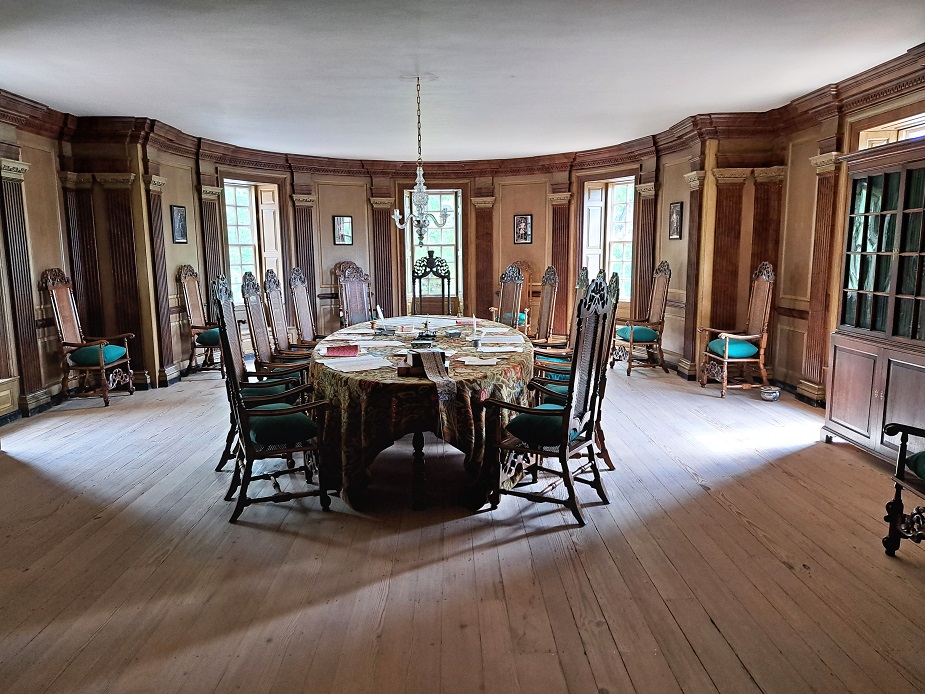
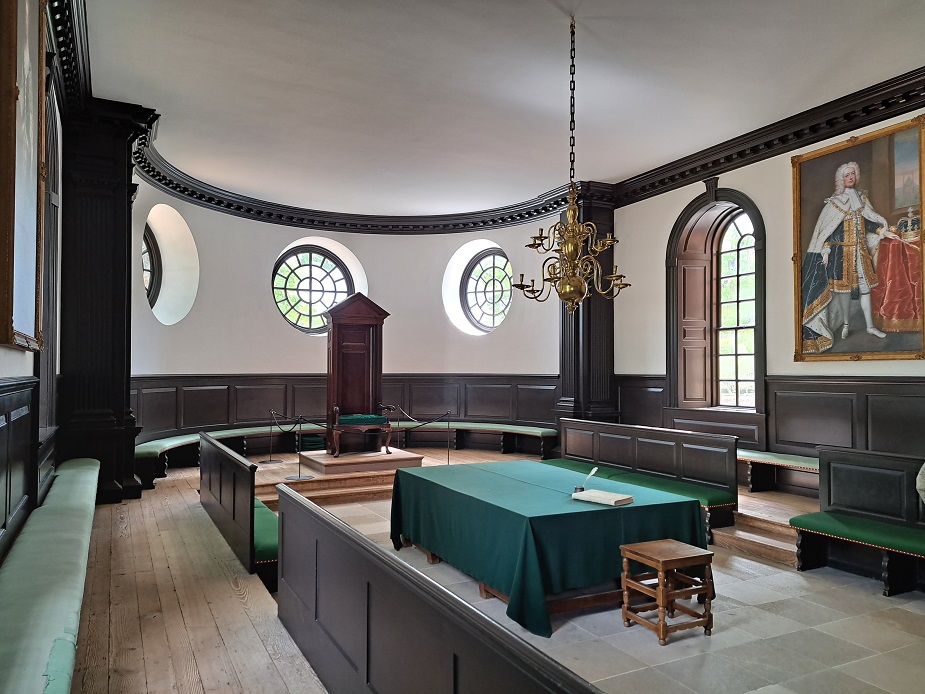
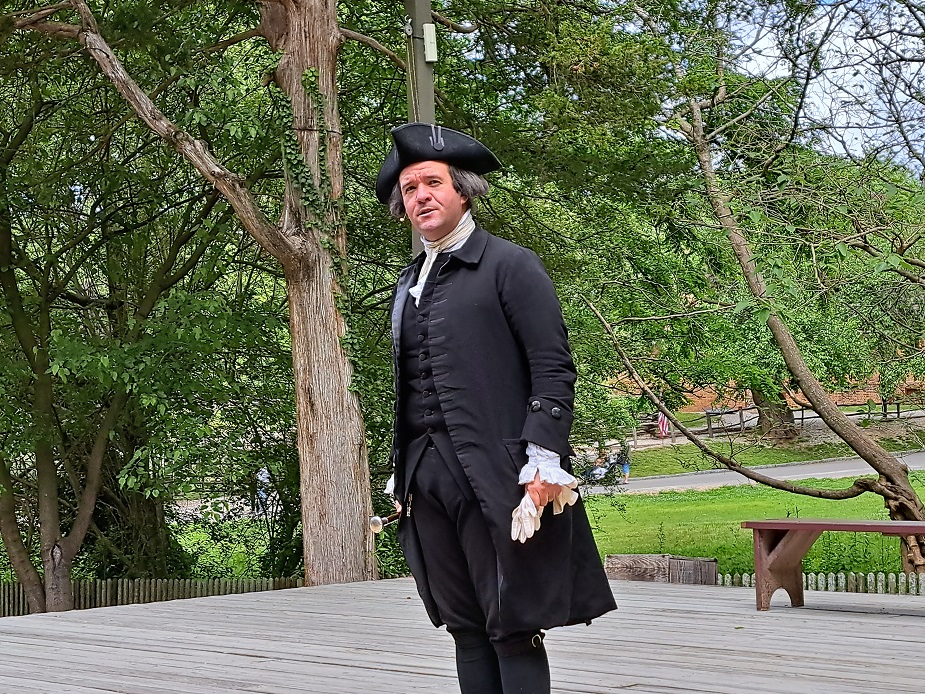
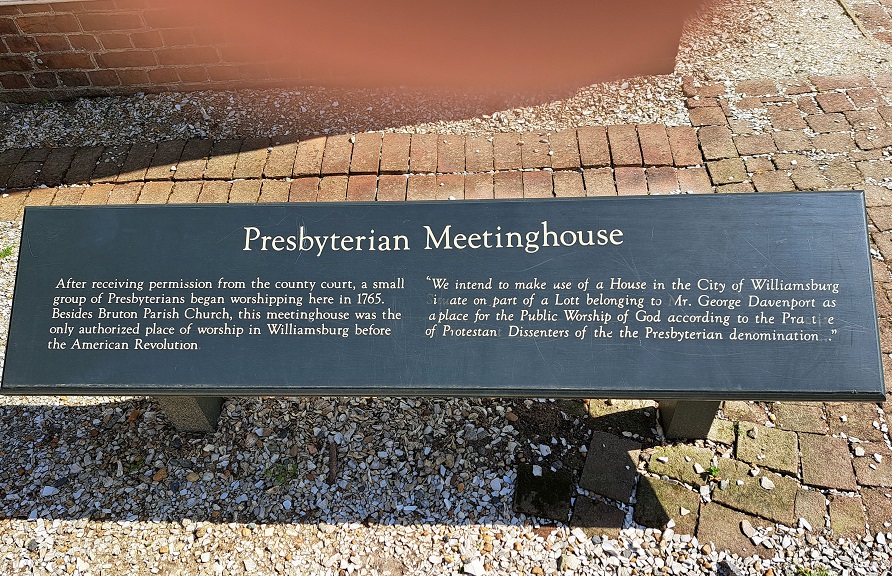
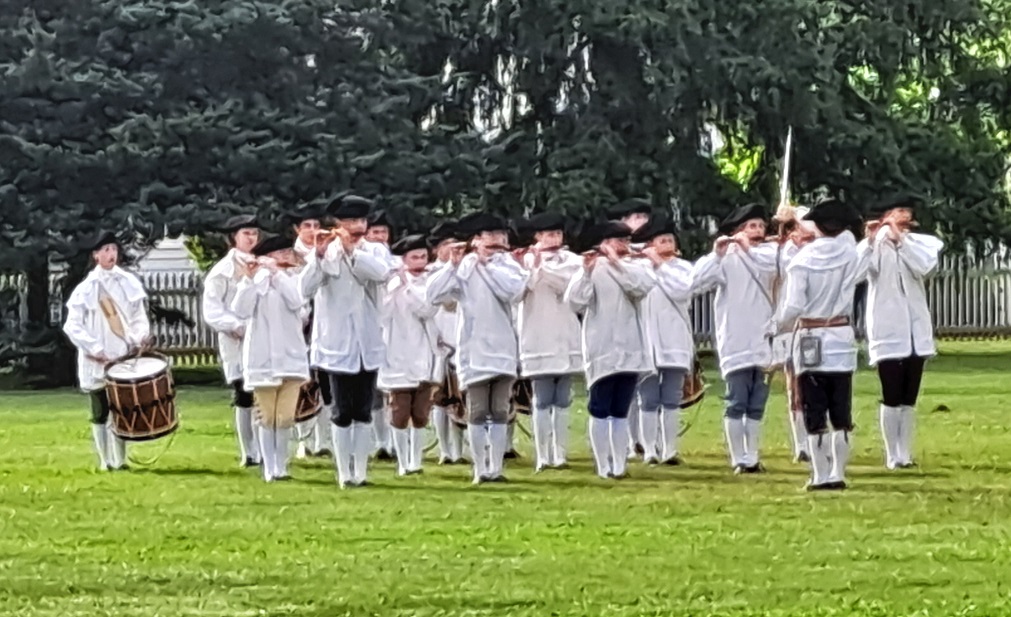
On our way to the famous Willard Hotel in Washington, where we stayed 3 nights, we stopped by Mount Vernon, George Washington's home. Time for a group picture!!
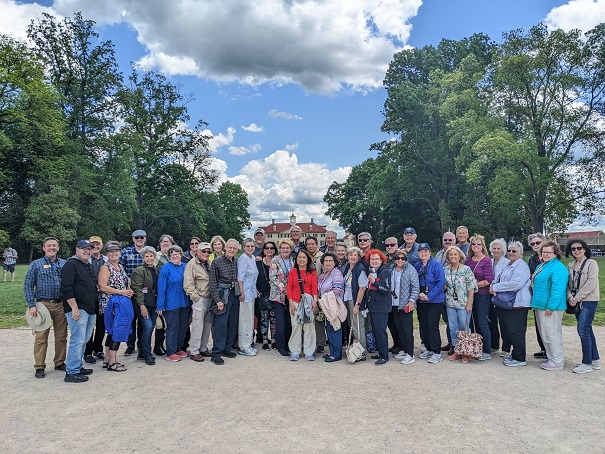
Mount Vernon is a lovely location, on high ground over-looking the Patomac River not far to the southwest of Washington. Although George Washington was a wealthy man in his own right, the mansion isn't quite as nice or fancy as Monticello -- turns out Washington spent lots of his own money on keeping the Continental Army supplied. Washington retired to Mount Vernon after his presidency, and died there several years later.
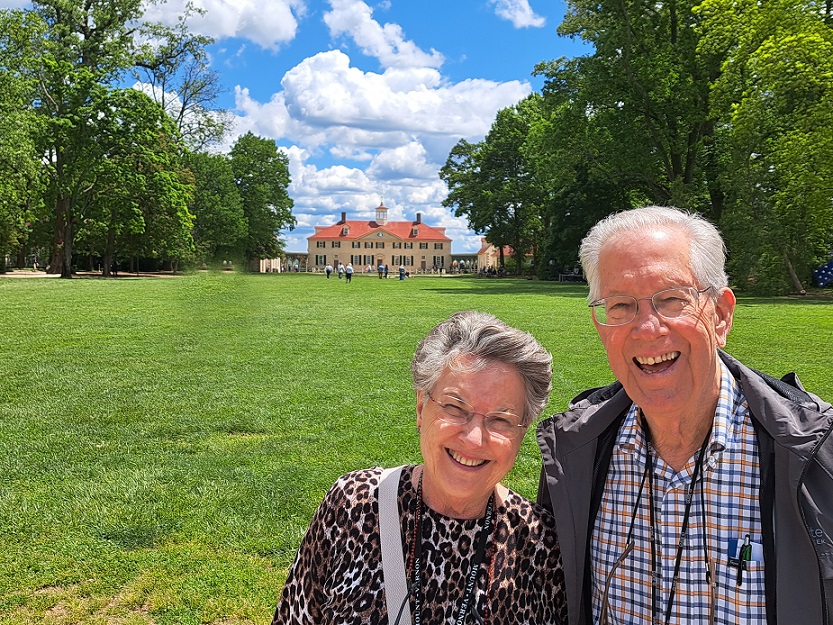
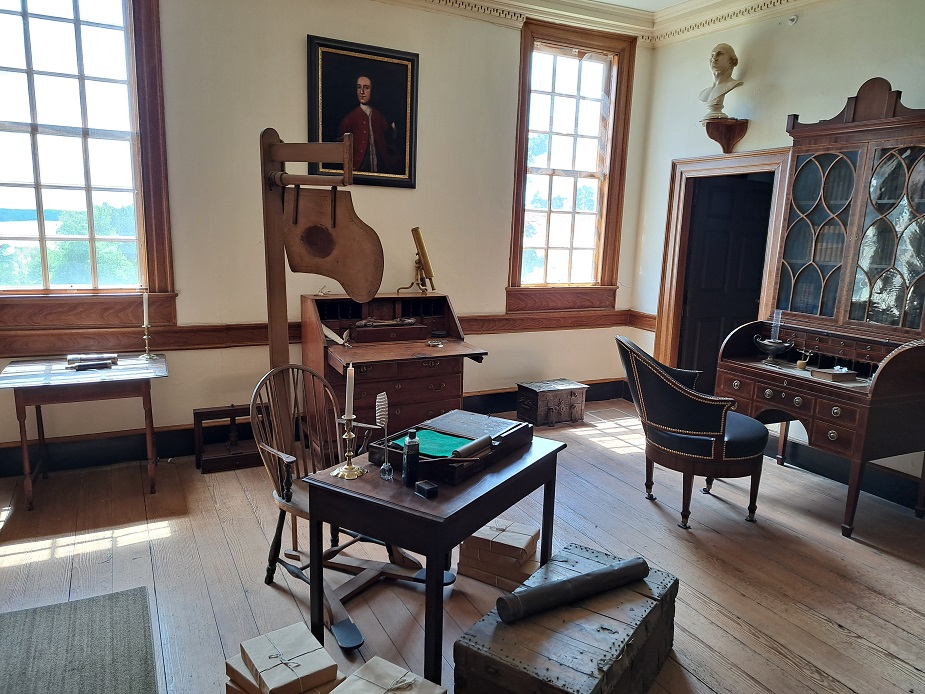
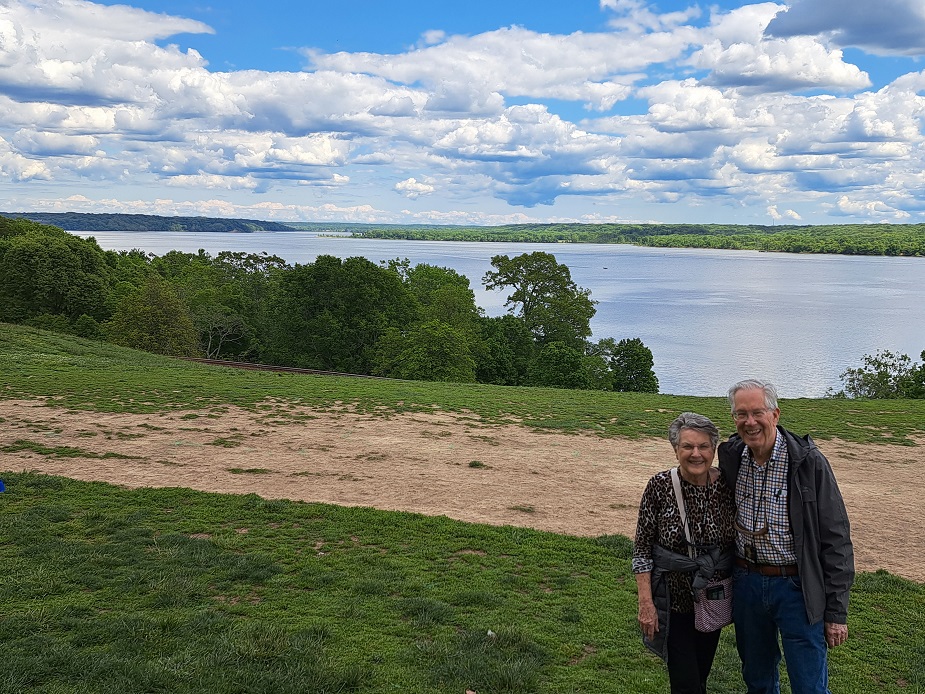
Our first day in Washington featured two city tours (one in the morning, and one at night, when all the memorials are lit up) plus a visit to the Library of Congress (173 million books and other items), which turns out to be an actual library (but accessible only to Congressional staff and other researchers) plus a very nice museum related to libraries and education. An early Guterberg Bible and various books donated by Thomas Jefferson are among their highlights.
Similarly, The National Archives (made famous by Nicholas Cage in the movie "National Treasure") is in fact an archive, which stores all federal government documents and records all of which ARE accessible to the public, plus a very nice museum related to the principals of democracy and related themes. Naturally, the faded originals of the Declaration of Independence and the Constitution are the stars, but they have all of Lincoln's writings (e.g., the Gettysburg Address) and millions of others. They are furiously trying to digitize everything, but this is proving to be a monumental task.
On our last day, we we to the White House visitors center (well done), and walked through the WW I memorial.
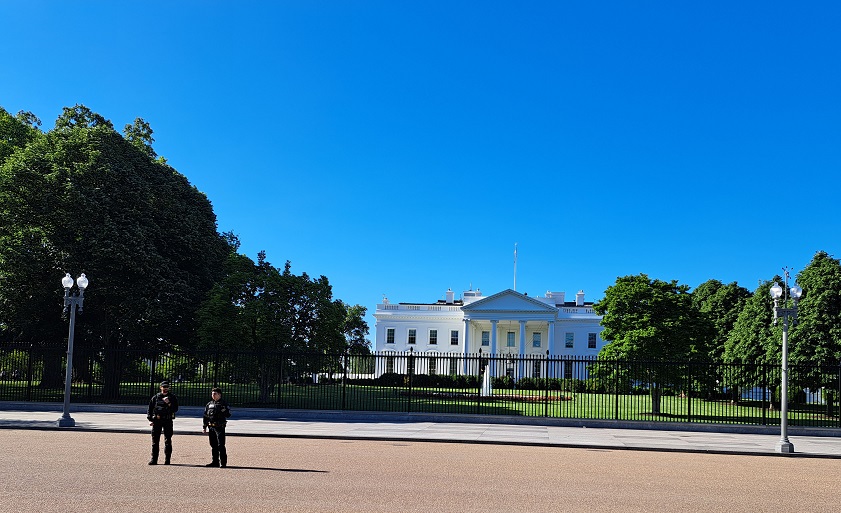
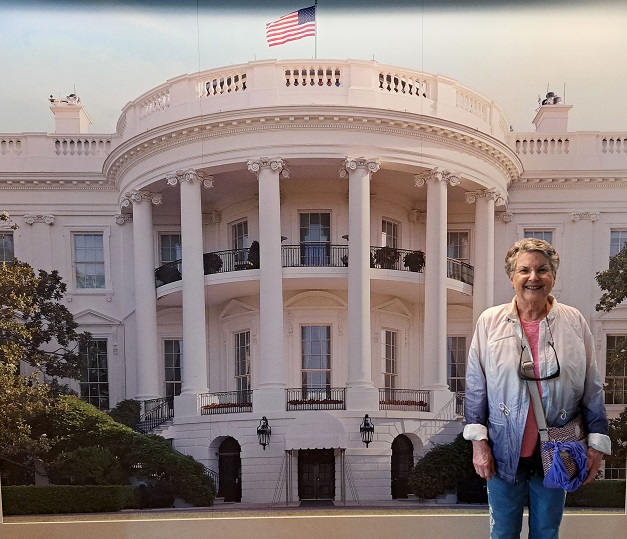
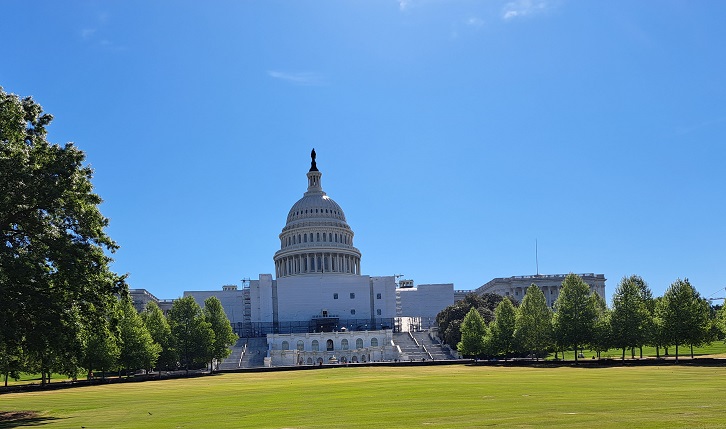
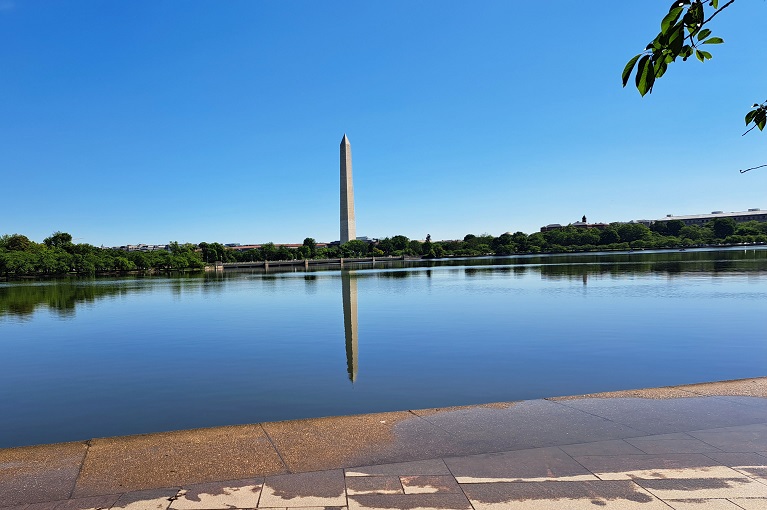
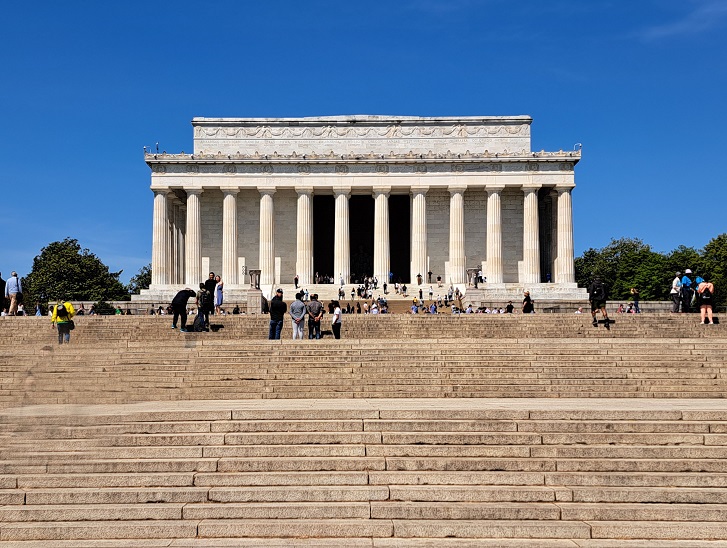
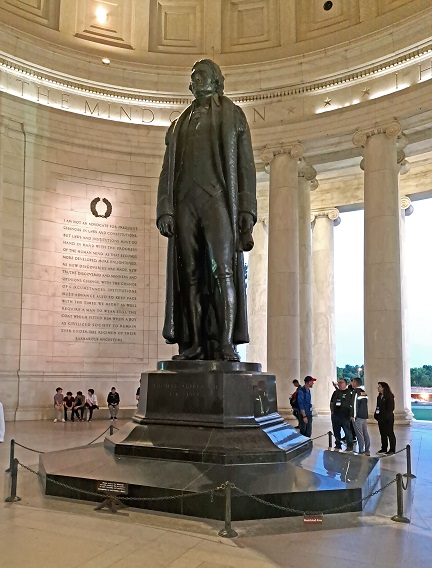
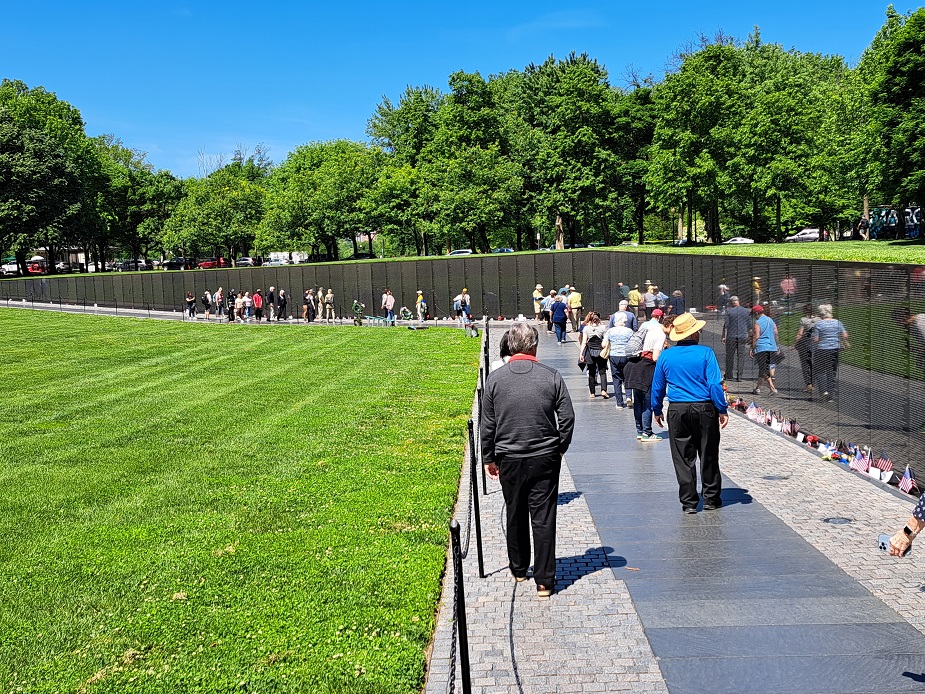
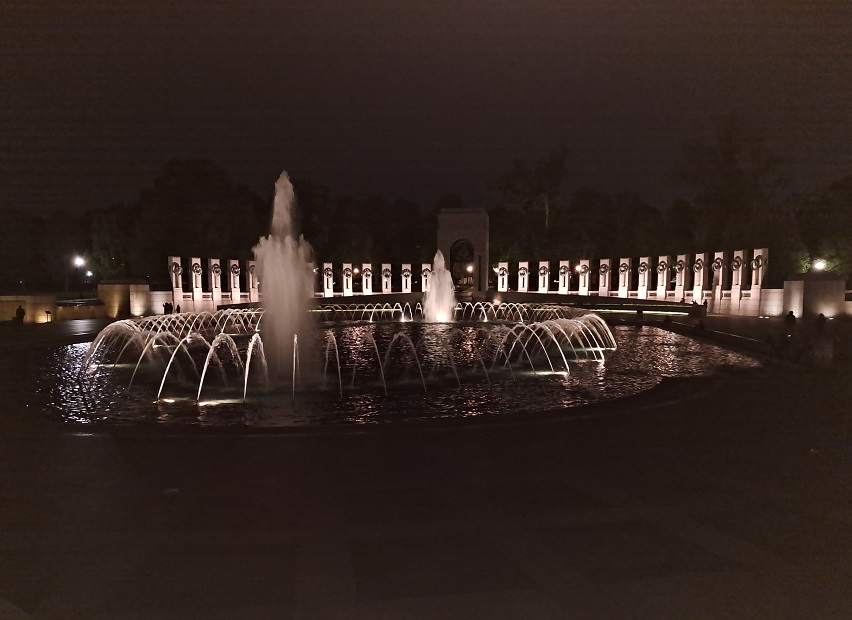
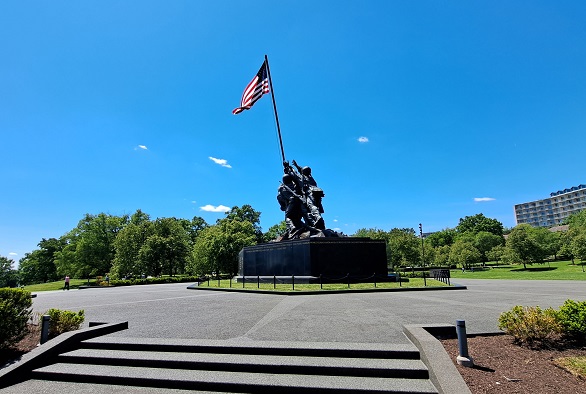
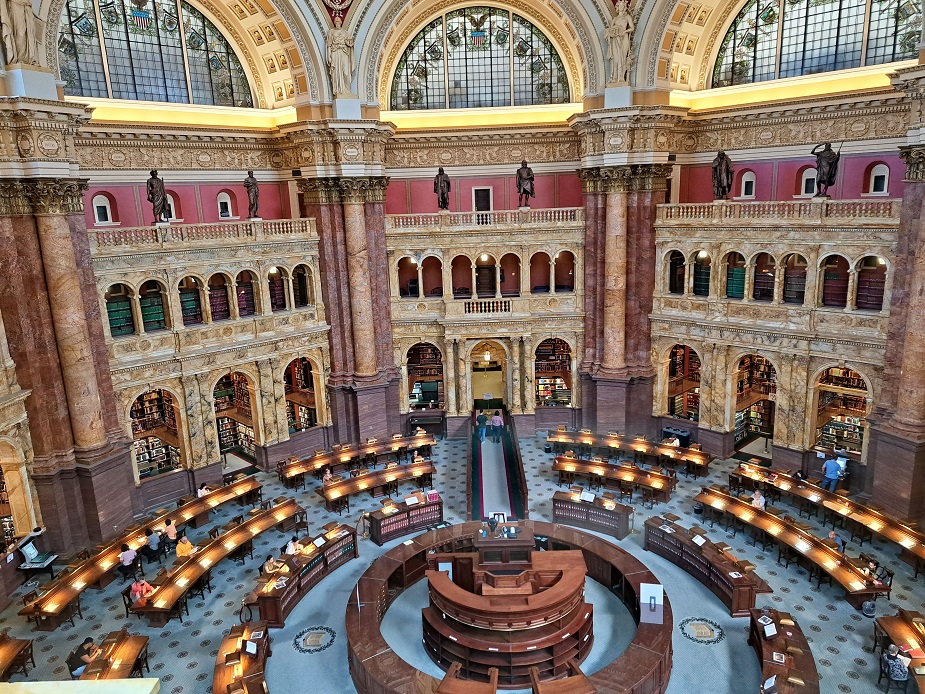
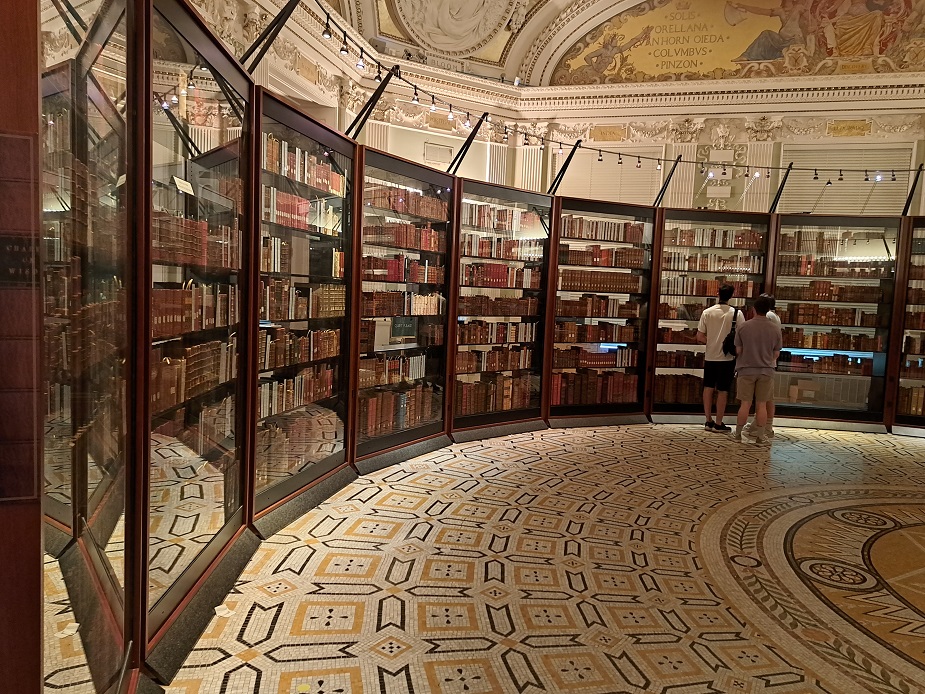
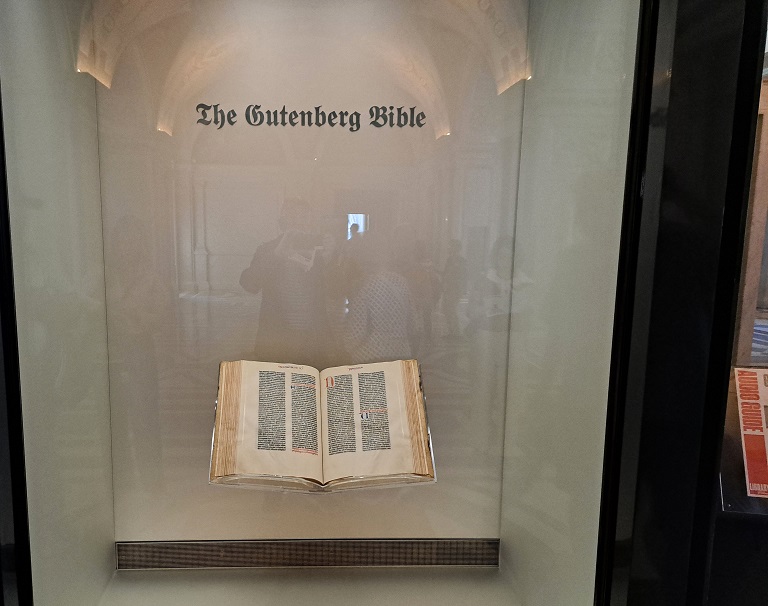
The Home Page.